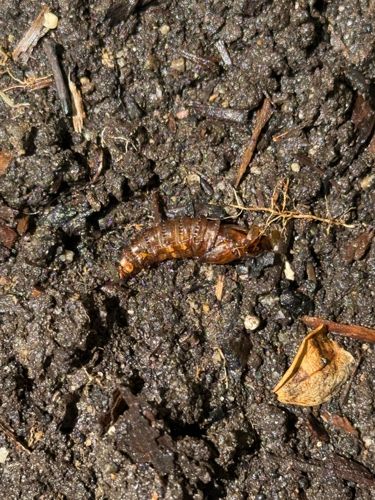Wireworm (larva of a Click Beetle)
Scientific Name: Family Elateridae (various genera and species)
Order & Family: Order: Coleoptera, Family: Elateridae
Size: Larvae (wireworms) can range from 0.5 to 4 cm (0.2 to 1.6 inches) in length.

Natural Habitat
Wireworms are found in various soil types, especially in fields, gardens, and grassy areas. They prefer moist, cool soil conditions, often where crops or grasses have recently been planted.
Diet & Feeding
Wireworms feed on seeds, seedlings, and the roots and tubers of various plants, including corn, wheat, potatoes, carrots, and other vegetables. They can also feed on decaying organic matter.
Behavior Patterns
Wireworms are the larval stage of click beetles. They live in the soil for several years (2-5 years) before pupating and emerging as adult click beetles. They are most active in spring and fall when soil temperatures are moderate. They move through the soil, feeding on roots and seeds. Adults do not cause significant plant damage.
Risks & Benefits
Risks: Wireworms are considered agricultural pests due to their destructive feeding habits on plant roots and seeds, leading to significant crop damage and yield loss. Benefits: As adults, click beetles are generally harmless. Some species of click beetle larvae can be predatory, feeding on other insect larvae, but the majority are plant pests.
Identified on: 8/8/2025